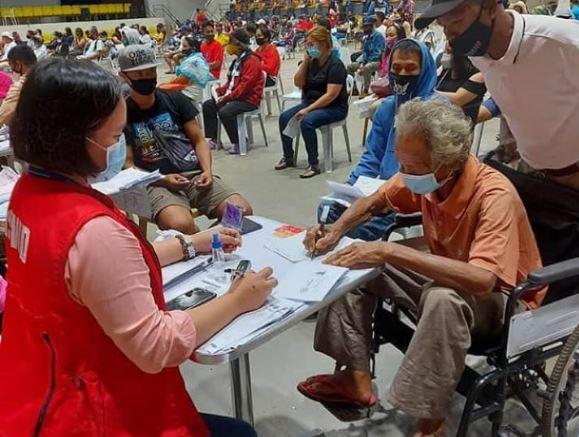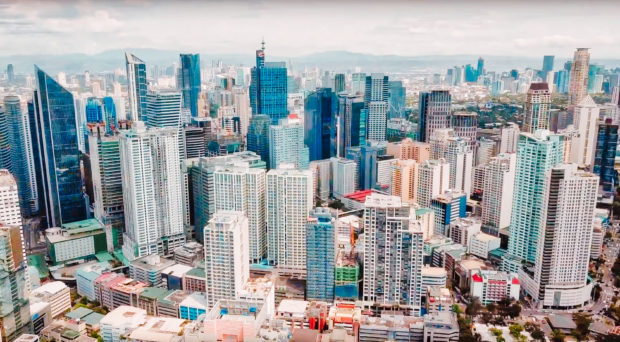PH all set for strong recovery
While this prolonged, drawn-out global health crisis initially forced business closures, massive layoffs and pushed the country into a recession, the Philippines’ strong macroeconomic fundamentals and the government’s prudent fiscal management policies and reforms are now paving the way to a much-anticipated recovery.
Even economic managers said that the “worst is over” given the green shoots of recovery seen so far, which include the smaller 11.5-percent contraction of the economy in the third quarter against the 16.9-percent decline in the second quarter; the country’s record-high gross international reserves, which stood at $104 billion as of end-October; and the reversal of a six-month-long export sales decline to a 2.2-percent growth in September, among many others.
“These green shoots indicate that the Philippine economy is on the mend. The path is clearer to a strong bounce back in 2021,” Finance Secretary Carlos Dominguez III said in a statement. “We expect to see additional improvements in the last quarter of this year as we progressively reopen businesses and mass transportation.”
4-pillar strategy

Supporting the vulnerable
In addressing the COVID-19 pandemic, the government quickly put together a four-pillar socioeconomic strategy—with a combined value of at least P2.57 trillion—to ensure that the country is on track toward economic recovery.
As early as March, the economic team initially announced a P27.1-billion package of priority actions meant to provide financial relief, support and assistance to those adversely affected by the pandemic. From an initial P1.45-trillion package of fiscal measures and emergency programs in April, the four-pillar socioeconomic strategy has expanded to a sizable P2.57 trillion, equivalent to roughly 13.8 percent of the country’s gross domestic product (GDP).
Article continues after this advertisementPillar 1 provides emergency support for vulnerable groups with an estimated P505.6 billion worth of assistance. Pillar 2 includes programs to beef up the country’s health-care system and infrastructure to fight the COVID-19 pandemic. Efforts under this pillar include health insurance coverage, allowances and increased testing, tracing and treatment capacities with funding of P53.2 billion to date.
Article continues after this advertisementPillar 3 consists of monetary actions to keep the economy afloat at about P1.3 trillion. This includes liquidity enhancing measures from the Bangko Sentral ng Pilipinas. Pillar 4, which accounts for close to P700 billion, or 3.8 percent of GDP, accounts for the government’s economic recovery plan to create jobs and sustain growth. This last pillar includes allocations for ongoing and proposed recovery measures, such as the Bayanihan to Recover as One Act (Bayanihan 2) and the Corporate Recovery and Tax Incentives for Enterprises (CREATE) bill.
Cushioning economic fallout

Intensifying fight vs COVID-19
To further cushion the economic fallout induced by the pandemic, the government sought to raise additional funding via loans from multilateral and bilateral sources. The administration aggressively ramped up infrastructure spending under the government’s flagship program, “Build, Build, Build,” to spur economic activity and create jobs.
Congress also acted urgently to enact Republic Act No. 11469, or the Bayanihan to Heal as One Act, in March to combat the COVID-19 pandemic in the country.
For many Filipinos reeling from the pandemic’s devastating impact on their health, finances and jobs, the Bayanihan to Heal as One Act (Bayanihan 1) came as a much welcome relief. Bayanihan 1 enabled the provision of subsidies ranging from P5,000 to P8,000 for 18 million households for two months, distributed wage subsidies to more than 3 million small business workers, gave additional compensation for health workers, and mandated a 30-day moratorium on loan payments, among other provisions.
Providing additional stimulus to the Philippines’ fight against COVID-19 was the enactment of the Bayanihan to Recover as One Act (Bayanihan 2) in September, which jacked up the Philippines’ war chest to address the health and socioeconomic crises inflicted by the pandemic.
Bayanihan 2 allocated funding for health-related programs for the country’s pandemic response and for sectors hit by the pandemic, such as micro, small and medium enterprises (MSMEs), transport and tourism.
Both measures also increased allocations for agriculture to ensure the country’s food security amid these challenging times.
‘Bounce back’ measures

Keeping PH economy afloat
To further accelerate Philippine economic recovery starting next year, the government is aggressively pushing to enact several more recovery measures.
One of the critical measures is the enactment of the CREATE bill, touted as the largest fiscal stimulus program in the country’s history. It is the largest tax cut for MSMEs and will help save businesses and jobs in this critical juncture of our economic history. This package will also allow the government to enhance the flexibility of the country’s decades-old incentive system to help attract quality investments.
Dominguez also pointed out the importance of the Financial Institutions Strategic Transfer (FIST) bill, which will allow banks to clean up their balance sheets and extend more credit to sectors in need by allowing them to offload souring loans and assets to asset management companies.
The economic managers emphasized that next year’s national budget of P4.5 trillion will be the heftiest stimulus package for our economy, enabling public spending to stimulate recovery.
Complemented by the recovery bills, the 2021 national budget serves as “a demonstration of its sustained commitment to public spending toward economic recovery,” according to Dominguez.

Creating jobs, sustaining growth
On the back of these measures, economic managers are hopeful that the economy will grow at 6.5 percent to 7.5 percent. A further expansion of 8 percent to 10 percent is targeted by 2022, by which the national budget is eyed to hit a record-high of P5 trillion.
“Next year, we expect the Philippine economy to post a strong rebound. We hope that the Philippines’ strong fundamentals, fiscal stamina and effective governance will continue to make us a promising investment destination,” Dominguez said.
“While strengthening our health system, we intend to continue finding more ways to revive the domestic economy. We intend to maintain fiscal discipline and make our financial sector more inclusive. We are introducing additional reforms that will help us consolidate a probusiness environment. The battle against COVID-19 is going to be a marathon, not a sprint. We need to maintain our fiscal stamina. We should have ample ammunition to outlast this enemy,” Dominguez added.